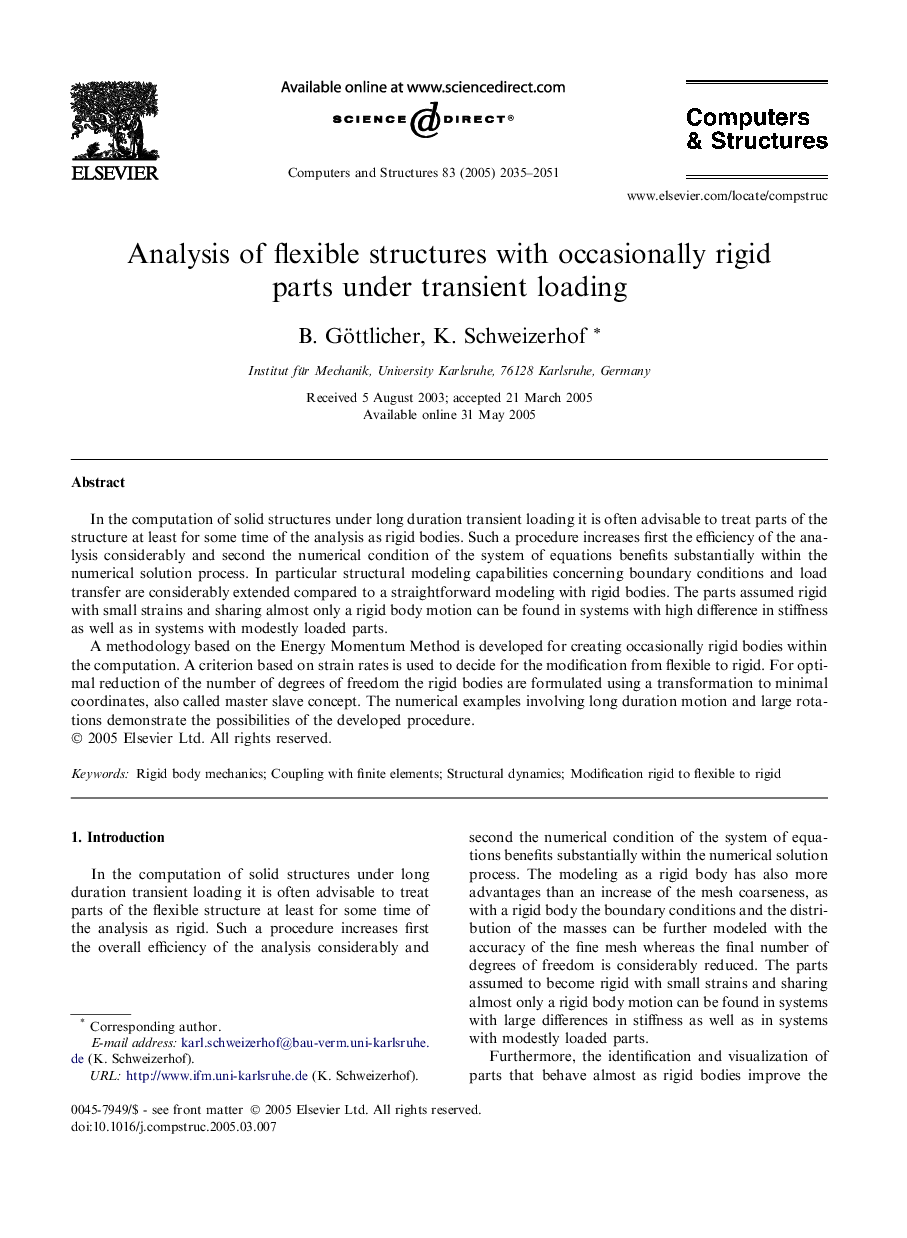| Article ID | Journal | Published Year | Pages | File Type |
|---|---|---|---|---|
| 510702 | Computers & Structures | 2005 | 17 Pages |
In the computation of solid structures under long duration transient loading it is often advisable to treat parts of the structure at least for some time of the analysis as rigid bodies. Such a procedure increases first the efficiency of the analysis considerably and second the numerical condition of the system of equations benefits substantially within the numerical solution process. In particular structural modeling capabilities concerning boundary conditions and load transfer are considerably extended compared to a straightforward modeling with rigid bodies. The parts assumed rigid with small strains and sharing almost only a rigid body motion can be found in systems with high difference in stiffness as well as in systems with modestly loaded parts.A methodology based on the Energy Momentum Method is developed for creating occasionally rigid bodies within the computation. A criterion based on strain rates is used to decide for the modification from flexible to rigid. For optimal reduction of the number of degrees of freedom the rigid bodies are formulated using a transformation to minimal coordinates, also called master slave concept. The numerical examples involving long duration motion and large rotations demonstrate the possibilities of the developed procedure.
